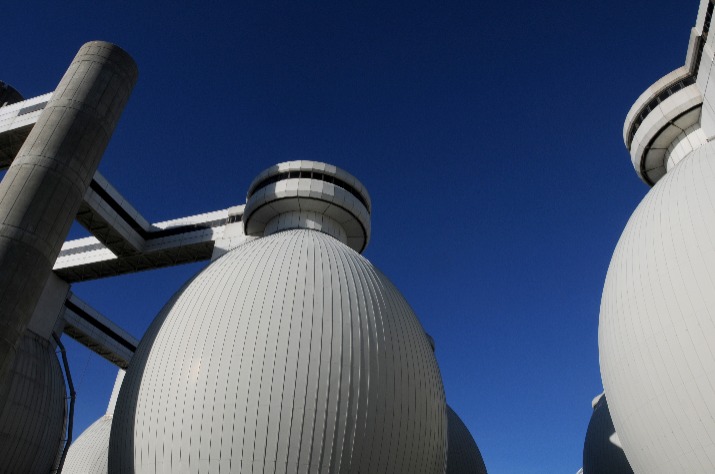The big egg-shaped containers you see are "digesters," which are used for anaerobic digestion.
It is in these vast egg-shaped tanks that anaerobic digestion occurs, and they are referred to as "digesters."
Anaerobic digestion is utilised in wastewater treatment facilities to stabilise both main and secondary sludges that settle out during aerobic wastewater treatment (Sewage Works).
During the aerobic wastewater treatment process, anaerobic digestion is employed to stabilise both main and secondary sludges that settle out during the process (Sewage Works).
CC BY-NC by Massachusetts Clean Energy Center
The primary output is a valuable renewable gas (mostly methane) known as biogas, which may be converted to biomethane after being cleaned up.
The gas can be used to power the machinery and offices at the wastewater treatment facility, and there may be enough left over to provide electricity to nearby households if there isn't enough demand.
The sludges contain a solids concentration ranging from 2 to 6 percent (equivalent to 20 to 60 grammes of Total Solids per litre of water).
Approximately 70% of the combined sludge is degradable, and in a normal single-stage CSTR reactor, up to 80% of it is digested, resulting in a TS reduction of approximately 50%.
The mixed sewage sludge is high in carbs, lipids, and proteins, but it is famously difficult to digest due to its high concentration of fibre.
Most of the most recent designs of these facilities contain a pre-treatment stage in which the cells of the contact entering sludge are broken apart, allowing the sludge to be digested more readily and more quickly in the digester.

